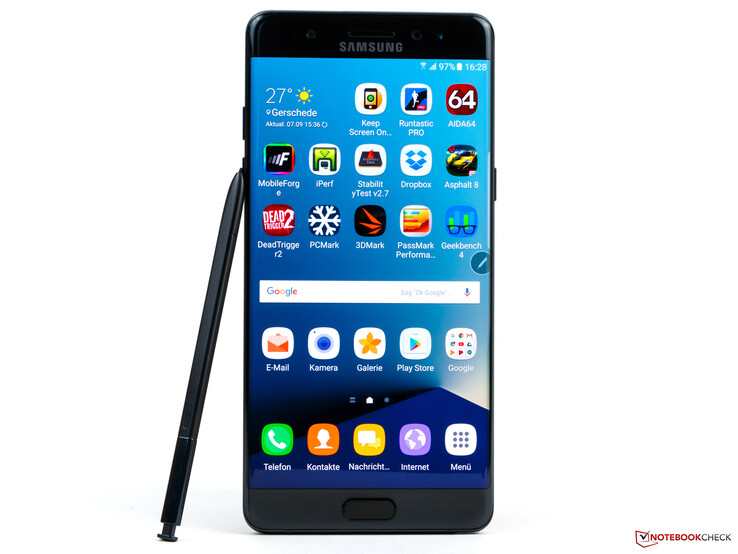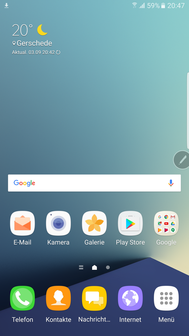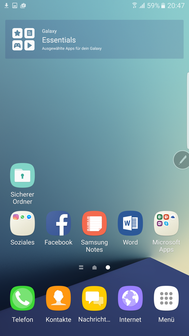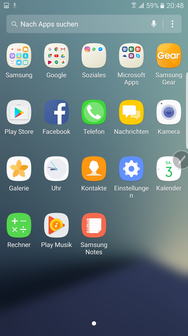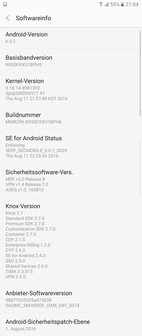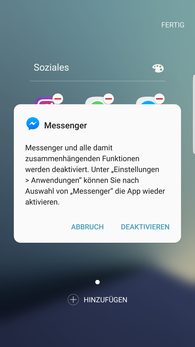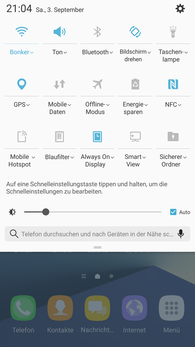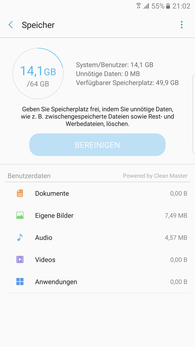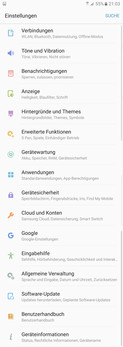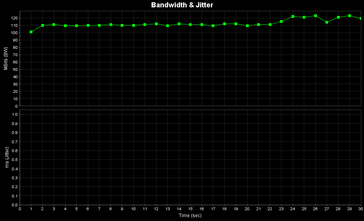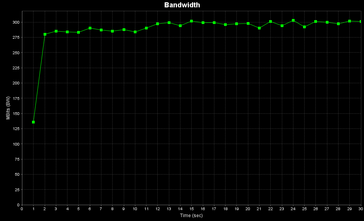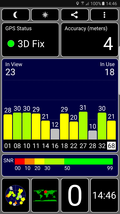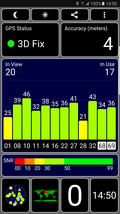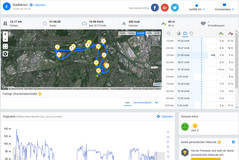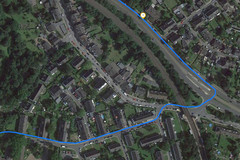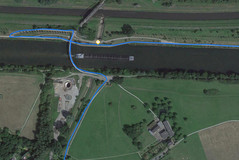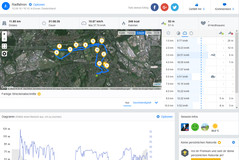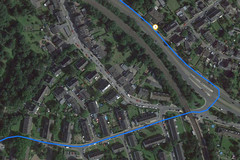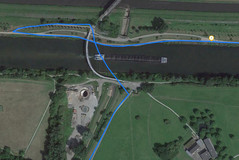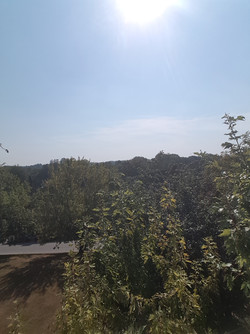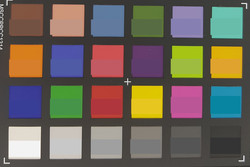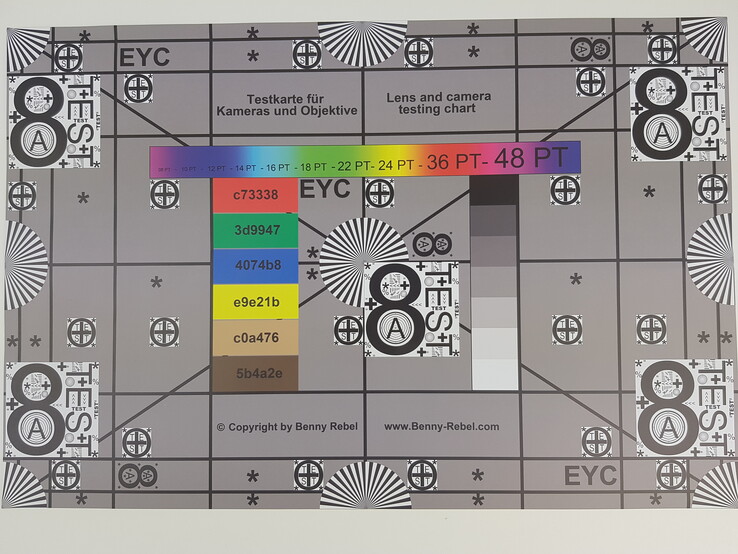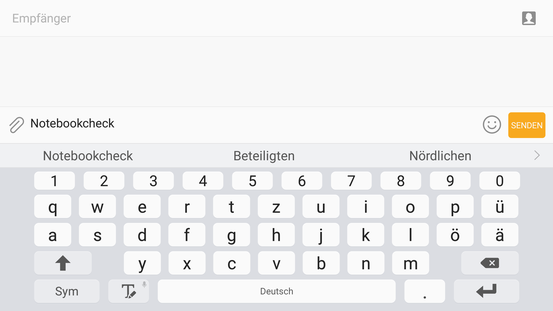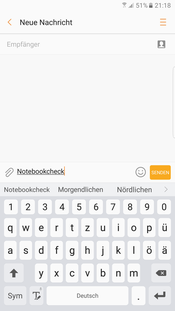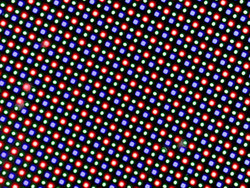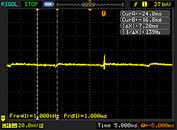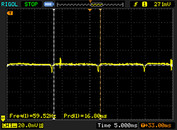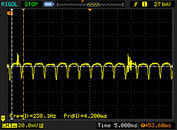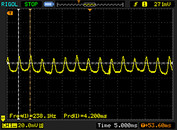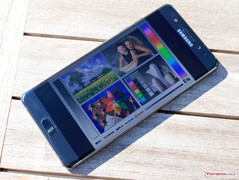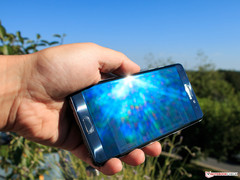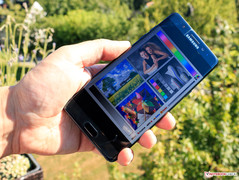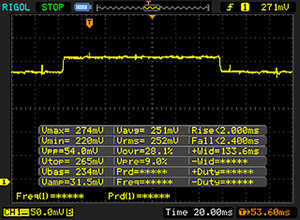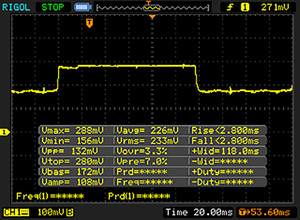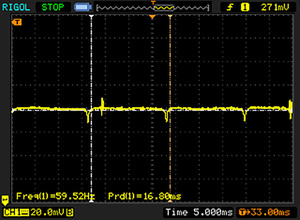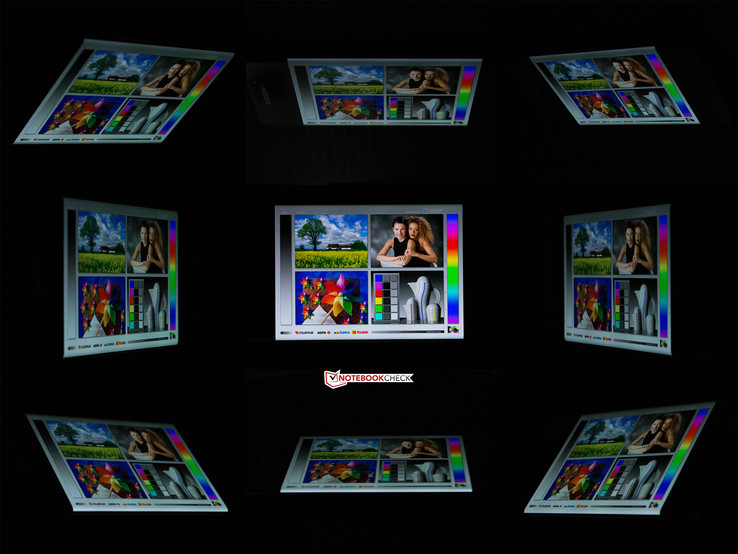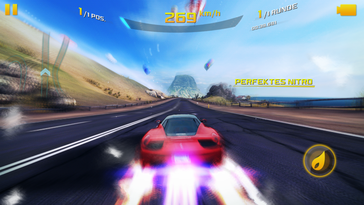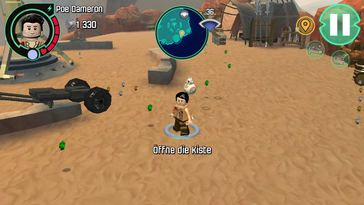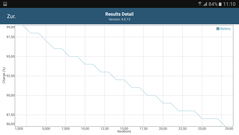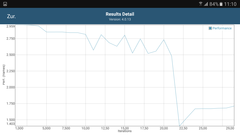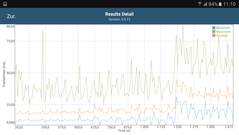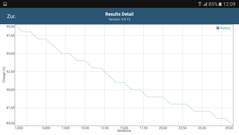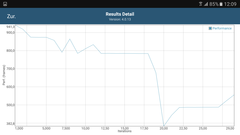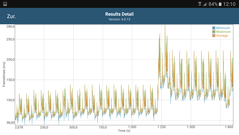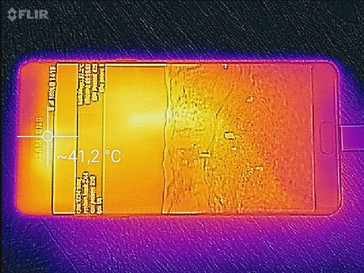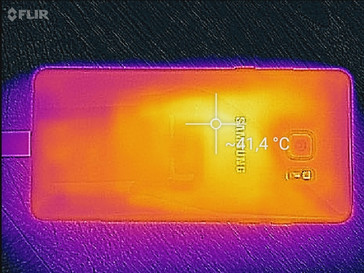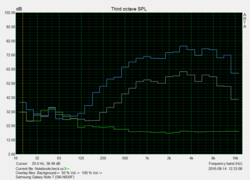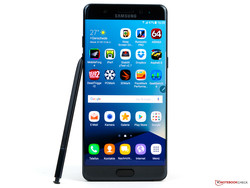Samsung Galaxy Note 7 Smartphone Review
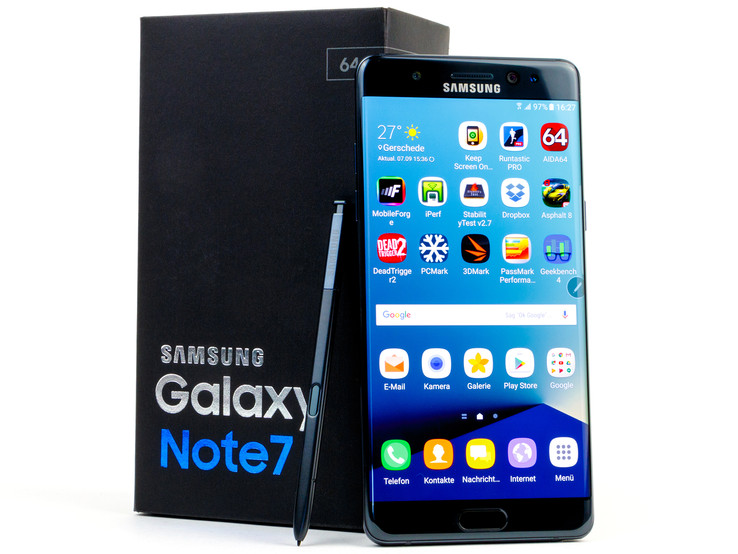
For the original German review, see here.
Samsung uses the Galaxy Note (SM-N930F) to correct its strategy from the previous year and once again offers the smartphone in Europe. Most of the changes compared to the Note 5 are in the details, but the jump from the Note 4 or Note Edge is much greater.
The 4 GB of memory has not changed compared to the predecessor, nor have the size and the resolution of the panel. However, the display now has two edges similar to the Galaxy S7 Edge. The internal storage capacity is doubled to 64 GB and the battery capacity has increased by 500 mAh, while the device is actually slightly lighter. The battery also turns out to be the biggest problem of the Samsung Galaxy Note 7, since it resulted in a world-wide recall of all devices due to several explosions (we reported). The reason seems to be a problem during the manufacturing of the battery. Anode and cathode of faulty products could come in contact with each other, which result in an overheating battery. As a result, Samsung has asked all customers to send in their devices. This happens even via push notification on the smartphone. We recommend users to follow this request if you have an early model. The replacement of the device is certainly an inconvenient process, but this technical issue, which is supposed to affect approximately 0.1% of the devices, will not have an effect on the rating.
The specification sheet of the Samsung Galaxy Note 7 leaves a good impression. The Koreans offer the best that is currently available and put it into a big smartphone. This is also the reason why many parts of the hardware are reminiscent of the Galaxy S7 series from the manufacturer, but the screen of the Note 7 is larger and there is once again an S-Pen. Another aspect that has increased is the price. Samsung has priced the phablet at 849 Euros (~$945), which is 150 Euros (~$167) more than the predecessor.
There is no real competitor for the Note 7, only the LG Stylus 2 has a similar size with an integrated stylus, but the technical specifications are miles away from the Note 7. We therefore primarily use high-end smartphones with large screens such as the Microsoft Lumia 950 XL, the Google Nexus 6P, the LG V10, the Apple iPhone 6s Plus and the Huawei Mate 8.
Update 10.10.2016: Due to the ongoing problems with the battery of the Note 7 (see here for more info) we decided to remove our rating. We recommend to take part in Samsungs exchange programm.
Case
The case of the Samsung Galaxy Note 7 leaves a very good impression and is available in the colors Black-Onyx, Blue-Coral and Silver-Titanium. At 7.9 millimeters (~0.3 in), it is slightly slimmer than the Note 5 (8.5 mm/~0.33 in) and the camera is only protruding by 0.6 millimeters (~0.02 in) from the chassis. Samsung uses a combination of metal and glass, the latter being the new Corning Gorilla Glass 5. We cannot confirm rumors about quicker scratching of the glass. The surface does not seem to be prone to scratches, but only a long-term use will tell the truth. The glass on the other hand is a real magnet for fingerprints, which are easily visible on our black test model. It is, however, pretty easy to clean the surface with a cloth.
The build quality is on a very high level. Most of the gaps are tight and even, and they are only slightly wider at the corners between the display glass and the frame, so these places collect some dirt. Twisting attempts are not an issue for the device, and we could only hear some minor creaking sounds from inside the phablet. Because of the OLED panel, there are no ripples on the screen even under pressure.
Samsung could have put a bit more effort into the card tray, which can accommodate a Nano-SIM and a microSD-card. It sits flush with the rest of the chassis, but is made of plastic and does not appear to be very sturdy. The S-Pen on the other hand is well integrated into the case and jumps slightly out when you push it, so you can easily take it out. Samsung seems to have listened to the criticism for the predecessor, because it is not possible to insert the pen the wrong way this time.
Another new feature is the IP68 certification, which describes protection against water and dust. This means that the device is waterproof for up to 30 minutes in a water depth of 1.5 meters (~5 ft) if it is properly sealed. The latter primarily concerns the card tray. The pen does not have to be inserted to ensure dust and water protection.
Overall, both the design and the tactile feeling of the Samsung Galaxy Note 7 are very good. Only minor flaws between the display and the frame as well as the slightly clattery card slot cause some criticism.
Connectivity
The feature list of the Samsung Galaxy Note 7 is a highlight and does not leave a lot to be desired. Besides NFC and the current Bluetooth 4.2, wireless communications to fitness devices can also be established via Ant+. Content can be wirelessly transferred to monitors via Miracast, which worked well in combination with an Amazon Fire TV Stick.
Finally, the USB port has a Type-C connector. It is a USB 3.1 (Gen. 1) port, which is potentially much faster. Unfortunately, Samsung ships the phablet with only a USB 2.0 data cable. The port also does not support wired picture transfers, neither via MHL, SlimPort, nor DisplayPort. At least USB-OTG is available, so external storage drives or input devices can be easily attached to the Note 7.
The microSD card reader supports all common standards, which are cards with a capacity of up to 256 GB as of this writing. As with the S7-series, it is not possible to format it as an internal storage or transfer apps to the memory card.
The infrared transmitter is not available on the Note 7 and there is no FM radio, either. On the other hand, you will find a number of sensors at the back, including a heart rate monitor, which can once again also be used as a camera trigger.
Software
The operating system is Google's Android 6.0 Marshmallow with Samsung's new Grace user interface, which is being referred to as TouchWiz 2015 on the website. Most changes are visible in the settings, which have been completely reworked and newly arranged for the Galaxy Note 7 so it will take some time to get used. The new UI leaves a slightly more grown up impression and is not quite as colorful as before. The visuals basic functions such as the Edge bar or Air Command have not changed. Samsung KNOX is supposed to increase the security.
We can also find the familiar Samsung apps on the phablet that we already know from the Galaxy S7. Samsung Notes is not preloaded and needs to be downloaded from the Galaxy Store first. However, there are some bloat wares on the device. In addition to some common social networking applications, there are also some apps from Microsoft. Not all of them can be completely removed, but only deactivated. The Game Launcher and some Samsung Apps are also preloaded.
An update to Android 7.0 Nougat is being prepared and expected in the first quarter of 2017.
Communication and GPS
Mobile Internet connections on the Samsung Galaxy Note 7 can be established via HSPA+ (up to 42 Mbps downstream) or the more modern LTE Cat. 9 (up to 450 Mbps downstream and 150 Mbps upstream). Many frequencies are covered and frequent travelers should not have any problems. The signal quality was inconspicuous in the metropolitan networks of O2 and Vodafone.
The specifications of the WLAN module meet the current standards with support for the IEEE 802.11 standards a/b/g/n/ac in 2.4 as well as 5.0 GHz networks. MU-MIMO is supported as well. This means that in theory the transfer rates should be higher, but the Galaxy Note 7 is rather disappointing in our test. The transfer rates between the phablet and our reference router Linksys EA 8500 are stable, but the performance is below expectations. The receiving performance is surprisingly slow at 113 MB/s on average, while the receiving speed is okay. It is possible Samsung will improve the situation with a patch.
| Networking | |
| iperf Server (receive) TCP 1 m | |
| Acer Liquid Jade Primo | |
| Samsung Galaxy S7 Edge | |
| Samsung Galaxy Note 7 | |
| OnePlus 3 | |
| iperf Client (transmit) TCP 1 m | |
| Acer Liquid Jade Primo | |
| Samsung Galaxy S7 Edge | |
| OnePlus 3 | |
| Samsung Galaxy Note 7 | |
Samsung's Galaxy Note 7 basically uses anything flying over our heads to locate its position: GPS, GLONASS, BeiDou and Galileo. The latter is not complete yet and is still being tested, but the support for the European satellite network does at least offer a certain security for the future. The sat fix is also quick indoors and very accurate at 4 meters (~13 ft), which is not improved outdoors.
To get a better idea of the performance of the GPS module, we took the Note 7 on a small bicycle tour and compared the results with the bicycle navigation device Garmin Edge 500. The deviations are not huge at 320 meters (~350 yd) on the 12.17 km (~7.9 mi) long track, but other smartphones perform better. While the course is still pretty accurate at the beginning of the tour, it drops a bit in the area of the bridge. The reason is the rather long distance between the locations. The deviation at the bridge is also the biggest during the whole tour. The Note 7 once again takes a similar shortcut while we rode under a train bridge. Overall, the GPS performance of the phablet is still entirely sufficient for daily tasks.
Telephone and Voice Quality
The Phone app on the Samsung Galaxy Note 7 is very similar to Google's default application with minimal design modifications.
The voice quality of the phablet is good when it is held against the ear, but there is a steady murmur from the ear piece. Our voice on the other hand was easy to understand by our call partner. A movie in the background was always audible to our call partner, but it was muffled. The speaker works well. There are some echoes, but it is usable in quiet environments. The provided headset sounds decent, but the microphone is not that great and sometimes it was hard for our call partner to hear us clearly.
Overall, a good performance in terms of voice quality, but it could be slightly better for a high-end product.
Cameras
Samsung uses the excellent camera technology from the Galaxy S7 models. The front camera has a 5 MP sensor with an aperture of f/1.7, which has an auto HDR as well as a Beauty mode and takes comparatively good pictures.
The main camera has a 12 MP sensor and offers numerous features that we have already had a closer look at in the review of the Galaxy S7 Edge. The main camera also has a wide aperture of f/1.7 and 1.4 µm pixels, which promise high light sensitivity. Settings can be adjusted in the Pro mode, and RAW pictures are also possible. The autofocus is very fast and we really like the automatic HDR mode. As with the S7, the sensor captures a lot of light, which results in a lot of details in the dark. This does affect the quality of the pictures though, but this is only noticeable at the full picture size. You can manage better results in the manual mode.
The quality is on a comparatively high level and is among the best you can currently get in a smartphone. Low-light pictures and HDR shots in particular are in a class of their own. The differences compared to the rivals are not that big in daylight. The quality of the Huawei P9 in particular is quite high in good lighting conditions, so it is basically a matter of taste. The dynamic range of the Note 7 is slightly higher though and the pictures are a little sharper.
Videos can be recorded at up to 2160p at 30 frames per second, so nothing has changed compared to the S7 in this respect.
We also check the camera performance of the Samsung Galaxy Note 7 under controlled lighting conditions and the behavior is identical to that of the similarly equipped Galaxy S7 Edge. Most colors on the ColorChecker Passport are oversaturated to ensure more brilliant pictures, and the white balance is comparatively warm. This suits the pictures pretty well though.
We also took a picture of the test chart under identical conditions. The result is very sharp and we can only see some blur towards the edges, but this is completely normal.
Accessories and Warranty
Samsung Galaxy Note 7 comes with some accessories. Besides a modular power adapter (9 V, 1.67 A or 5 V, 2 A, respectively), you get a corresponding USB cable. It can be used to charge the device as well as data transfers with other devices, but unfortunately it supports only the 2.0 standard. There is also an adapter from USB Type-C to Type-A as well as Type-C to Micro-USB. A headset, a SIM tool and a small tool to change the S-Pen tips including five replacement tips are also included. The usual service brochures with a quick-start guide, warranty information and security information are also included.
There are numerous optional accessories for the Galaxy Note 7, starting with protective cases, better headphones with or without cables, charging adapters and stations, attachable keyboards, camera lenses up to external devices or attachable battery packs.
The warranty for the device is 24 months, two months for the battery and 6 months for the other accessories.
Input Devices and Handling
The capacitive touchscreen of the Samsung Galaxy Note 7 can recognize up to ten inputs simultaneously and works well in all areas. The surface is very sensitive and reacts immediately to even light inputs. The gliding capabilities are good and inputs on the edges are recognized accurately.
The physical buttons have a well-defined pressure point and leave a very sophisticated impression. Samsung has redesigned the keyboard layout without really changing anything. We liked it, but you can obviously download other keyboards from the Play Store.
Samsung has implemented the usual fingerprint scanner for the security. It is still integrated into the Home button and as usual works well. The Iris scanner is a new addition, which is supposed to improve the security even further. It works pretty reliably and well in practice as long as the user does not wear glasses or contact lenses. It is also unfortunate that you can only store one Iris profile, so this feature does not offer a lot of value for many users.
Even though it is mandatory for the Note series, the S-Pen is the highlight of the device. It does not need its own battery and is extremely slim and light. If you take it out of the device, the so called Air Command will pop up on the screen with corresponding actions for the user. Besides the simple creation of notes, you can also copy or mark text passages, mark screenshots or even translate texts. The pen has only to hover above the word for the latter and a translation in the selected languages will pop up. This works even when the camera module is active, but requires some practice. The function “Overview" can reduce the size of an app and it will hover as an additional icon above the picture content, and can be enlarged if necessary, to make a note, for instance. Air Command can be equipped with up to six functions, which can be arranged freely. You also get a magnifier, which offers a 4x zoom.
The S-Pen is now also resistant against water to ensure better handling of the Note 7 in the rain. Another handy feature is the possibility to make a note without even activating the smartphone. You just have to take out the pen and write on the screen; the note can also be attached to the always-on display. The tip of the S-Pen is now much thinner and is only 0.7 millimeters (~0.03 in) thick. The pressure levels were doubled to 4096 compared to the predecessor. The S-Pen is therefore a powerful tool, which is much more than a conventional input pen and has been well refined.
Display
The panel of the Samsung Galaxy Note 7 is just as big as the predecessor at 5.7 inches and the resolution is also identical. 2560x1440 pixels result in 515 PPI and therefore extremely sharp pictures. Unlike the Note 5, however, the display of the test model also has the rounded edges at both sides, but they are not as pronounced as the edges on the S7 Edge. It is also the first panel from Samsung that supports HDR, which is supposed to provide more details during movie playback in particular.
Samsung's own Super AMOLED display manages a great luminance and we can measure up to 554 cd/m² with the activated ambient light sensor, so it is on par with the S7 Edge. The manual setting reaches up to 352 cd/m² to avoid quick draining of the battery. When we measure the luminance with an even brightness distribution of bright and dark areas (APL 50), the Note 7 even reaches up to 686 cd/m². Thanks to the absolute black value, the resulting contrast ratio is extremely high and tends towards infinite in theory.
Only the brightness distribution of our test model is not that good at just 84%, while the S7 Edge still managed 96%. The distribution clearly shows a decrease towards the lower third of the panel. This might be caused by a production error. You can use a blue light filter for more comfortable reading in the dark. It will have to be activated/deactivated manually every time but unfortunately it cannot be controlled via the brightness sensor.
Pulse width modulation (PWM) is always difficult topic for OLED screens, so we had a closer look in the case of the Note 7. We can see display flickering at every brightness level under the oscilloscope. The manifestation is pretty different. The PWM is just measurable at the maximum luminance and is visible at a slight notch in the diagram with an almost linear amplitude curve. These notches get bigger as soon as we reduce the brightness and result in display flickering at about 60 Hz. Because of the big gaps and the low intensity of the notches, we do not consider them to be annoying. The frequency is already at 238 Hz at 90% luminance, so there can actually be problems for sensitive users.
| |||||||||||||||||||||||||
Brightness Distribution: 84 %
Center on Battery: 544 cd/m²
Contrast: ∞:1 (Black: 0 cd/m²)
ΔE ColorChecker Calman: 1.9 | ∀{0.5-29.43 Ø4.78}
ΔE Greyscale Calman: 1.8 | ∀{0.09-98 Ø5}
100% sRGB (Argyll 1.6.3 3D)
83.92% AdobeRGB 1998 (Argyll 1.6.3 3D)
96.1% AdobeRGB 1998 (Argyll 3D)
100% sRGB (Argyll 3D)
87.3% Display P3 (Argyll 3D)
Gamma: 2.12
CCT: 6449 K
| Samsung Galaxy Note 7 Dual Edge Super AMOLED, 2560x1440, 5.7" | Samsung Galaxy Note Edge Super AMOLED, 2560x1600, 5.6" | Samsung Galaxy Note 5 SM-N920A Super AMOLED, 2560x1440, 5.7" | Huawei P9 Plus AMOLED, 1920x1080, 5.5" | Microsoft Lumia 950 XL AMOLED, 2560x1440, 5.7" | Apple iPhone 6S Plus IPS, 1920x1080, 5.5" | LG Stylus 2 IPS, 1280x720, 5.7" | LG V10 Quantum-IPS, 2560x1440, 5.7" | |
|---|---|---|---|---|---|---|---|---|
| Screen | -30% | -6% | -95% | -24% | -31% | -142% | -105% | |
| Brightness middle (cd/m²) | 544 | 481 -12% | 394.8 -27% | 361 -34% | 297 -45% | 583 7% | 370 -32% | 450 -17% |
| Brightness (cd/m²) | 523 | 474 -9% | 397 -24% | 366 -30% | 297 -43% | 560 7% | 374 -28% | 431 -18% |
| Brightness Distribution (%) | 84 | 94 12% | 91 8% | 87 4% | 93 11% | 91 8% | 92 10% | 93 11% |
| Black Level * (cd/m²) | 0.46 | 0.25 | 0.22 | |||||
| Colorchecker dE 2000 * | 1.9 | 2.24 -18% | 1.49 22% | 5.1 -168% | 2.67 -41% | 3.55 -87% | 6.1 -221% | 5.18 -173% |
| Colorchecker dE 2000 max. * | 4.2 | 10 -138% | 3.98 5% | 16.5 -293% | 10.39 -147% | |||
| Greyscale dE 2000 * | 1.8 | 4.02 -123% | 1.98 -10% | 5.5 -206% | 2.81 -56% | 3.88 -116% | 7 -289% | 6.94 -286% |
| Gamma | 2.12 104% | 3.07 72% | 2.19 100% | 2.24 98% | 2.08 106% | 2.2 100% | 2.25 98% | 2.24 98% |
| CCT | 6449 101% | 6476 100% | 6382 102% | 7388 88% | 6379 102% | 7280 89% | 8350 78% | 8091 80% |
| Color Space (Percent of AdobeRGB 1998) (%) | 83.92 | 66.31 -21% | 59.05 -30% | |||||
| Color Space (Percent of sRGB) (%) | 100 | 99.79 0% | 92.8 -7% | |||||
| Contrast (:1) | 1267 | 1480 | 2045 |
* ... smaller is better
As with other Samsung flagships, the Galaxy Note comes with an adjustable display, which will select one of the three picture profiles depending on the app. If you have a favorite, you can also set it manually in the settings.
All profiles show low DeltaE deviations, but the most accurate profile is Photo, which also has a big color gamut. The average DeltaE deviation for the grayscale is just 1.8 and all measurements stay below the target value of 3, so the deviations are not visible for the eye. The white point is also close to the ideal (6500 K) at 6449 K. Thanks to the wide color gamut, the colors in the AdobeRGB reference are also much more accurate. The average DeltaE value is very good at 1.9, even though red and green are two small outliers at 4.2. The sRGB color space is completely covered, the wider AdobeRGB reference by almost 84%.
We can notice the typical blue cast with the profile Cinema and colors are generally cooler. The profile Simple has only a comparatively low color space coverage, but the colors are not as saturated. Overall, the panel of the Galaxy Note 7 is convincing and delivers great pictures.
Display Response Times
| ↔ Response Time Black to White | ||
|---|---|---|
| 4.4 ms ... rise ↗ and fall ↘ combined | ↗ 2 ms rise | |
| ↘ 2.4 ms fall | ||
| The screen shows very fast response rates in our tests and should be very well suited for fast-paced gaming. In comparison, all tested devices range from 0.1 (minimum) to 240 (maximum) ms. » 16 % of all devices are better. This means that the measured response time is better than the average of all tested devices (20.2 ms). | ||
| ↔ Response Time 50% Grey to 80% Grey | ||
| 5.6 ms ... rise ↗ and fall ↘ combined | ↗ 2.8 ms rise | |
| ↘ 2.8 ms fall | ||
| The screen shows very fast response rates in our tests and should be very well suited for fast-paced gaming. In comparison, all tested devices range from 0.165 (minimum) to 636 (maximum) ms. » 17 % of all devices are better. This means that the measured response time is better than the average of all tested devices (31.6 ms). | ||
Screen Flickering / PWM (Pulse-Width Modulation)
| Screen flickering / PWM detected | 59.5 Hz | ||
The display backlight flickers at 59.5 Hz (worst case, e.g., utilizing PWM) . The frequency of 59.5 Hz is very low, so the flickering may cause eyestrain and headaches after extended use. In comparison: 53 % of all tested devices do not use PWM to dim the display. If PWM was detected, an average of 8111 (minimum: 5 - maximum: 343500) Hz was measured. | |||
The viewing angle stability of the Samsung Galaxy Note 7 is very good. Colors do not invert and the brightness drop is minimal from flat viewing angles. As usual, Samsung uses a Super AMOLED screen, so there is no clouding. We can still see the familiar color cast from a viewing angle of 30 degrees, which is a blueish-green and less pronounced compared to the Galaxy S7 Edge. The much gentler rounded display edges also improve the visuals since contents do not distort as much.
Performance
As with many other aspects, the Samsung Galaxy Note 7 also uses many technical components from the Galaxy S7 models. This means that the new Note is also equipped with Samsung's own Exynos 8890. Its CPU has eight cores and is based on the big.LITTLE concept. It consists of four Cortex-A53 cores (up to 1.6 GHz) as well as four Samsung M1 cores. The latter can reach up to 2.6 GHz when two cores are active or up to 2.3 GHz for all four. The system is supported by a 4 GB LPDDR4 memory and the integrated graphics unit ARM Mali-T880 MP12.
The performance of the Note 7 is therefore on par with the S7 Edge, which is not a big surprise. Even though the SoC has been available on the market for almost 6 months now, it still offers the best performance you can currently get in a smartphone.
One interesting aspect is the system performance since the Note 7 is equipped with a different UI. The change actually improves the results. The PCMark result is 10% higher and AnTuTu also determines a slightly higher score. Basemark OS II does show a very good performance for the Note 7, but it is slower than the S7 Edge. PCMark delivers the most consistent results and shows that there is an improvement over the old TouchWiz UI, but the competition from Huawei, HTC, and OnePlus are still much better. Subjectively, there are also some small stutters from time to time, which is not the case for the P9 or the OnePlus 3.
| AnTuTu v6 - Total Score (sort by value) | |
| Samsung Galaxy Note 7 | |
| Samsung Galaxy S7 Edge | |
| Apple iPhone 6S Plus | |
| HTC 10 | |
| Huawei P9 | |
| OnePlus 3 | |
| LG Stylus 2 | |
| Microsoft Lumia 950 XL | |
| Geekbench 4.0 | |
| 64 Bit Single-Core Score (sort by value) | |
| Samsung Galaxy Note 7 | |
| Samsung Galaxy S7 Edge | |
| Apple iPhone 6S Plus | |
| Huawei P9 | |
| OnePlus 3 | |
| 64 Bit Multi-Core Score (sort by value) | |
| Samsung Galaxy Note 7 | |
| Samsung Galaxy S7 Edge | |
| Apple iPhone 6S Plus | |
| Huawei P9 | |
| OnePlus 3 | |
| GFXBench (DX / GLBenchmark) 2.7 | |
| T-Rex Onscreen (sort by value) | |
| Samsung Galaxy Note 7 | |
| Samsung Galaxy S7 Edge | |
| Apple iPhone 6S Plus | |
| HTC 10 | |
| Huawei P9 | |
| OnePlus 3 | |
| LG Stylus 2 | |
| Microsoft Lumia 950 XL | |
| 1920x1080 T-Rex Offscreen (sort by value) | |
| Samsung Galaxy Note 7 | |
| Samsung Galaxy S7 Edge | |
| Apple iPhone 6S Plus | |
| HTC 10 | |
| Huawei P9 | |
| OnePlus 3 | |
| LG Stylus 2 | |
| Microsoft Lumia 950 XL | |
| GFXBench 3.1 | |
| on screen Manhattan ES 3.1 Onscreen (sort by value) | |
| Samsung Galaxy Note 7 | |
| Samsung Galaxy S7 Edge | |
| Apple iPhone 6S Plus | |
| HTC 10 | |
| Huawei P9 | |
| OnePlus 3 | |
| LG Stylus 2 | |
| 1920x1080 Manhattan ES 3.1 Offscreen (sort by value) | |
| Samsung Galaxy Note 7 | |
| Samsung Galaxy S7 Edge | |
| Apple iPhone 6S Plus | |
| HTC 10 | |
| Huawei P9 | |
| OnePlus 3 | |
| LG Stylus 2 | |
| GFXBench | |
| on screen Car Chase Onscreen (sort by value) | |
| Samsung Galaxy Note 7 | |
| Samsung Galaxy S7 Edge | |
| HTC 10 | |
| Huawei P9 | |
| OnePlus 3 | |
| LG Stylus 2 | |
| 1920x1080 Car Chase Offscreen (sort by value) | |
| Samsung Galaxy Note 7 | |
| Samsung Galaxy S7 Edge | |
| HTC 10 | |
| Huawei P9 | |
| OnePlus 3 | |
| LG Stylus 2 | |
| PCMark for Android - Work performance score (sort by value) | |
| Samsung Galaxy Note 7 | |
| Samsung Galaxy S7 Edge | |
| Samsung Galaxy Note 5 SM-N920A | |
| HTC 10 | |
| Huawei P9 | |
| OnePlus 3 | |
| LG Stylus 2 | |
| Basemark ES 3.1 / Metal - offscreen Overall Score (sort by value) | |
| Samsung Galaxy Note 7 | |
| Samsung Galaxy S7 Edge | |
| Apple iPhone 6S Plus | |
| HTC 10 | |
| Huawei P9 | |
| OnePlus 3 | |
| Lightmark - 1920x1080 1080p (sort by value) | |
| Samsung Galaxy Note 7 | |
| Samsung Galaxy S7 Edge | |
| Samsung Galaxy Note 5 SM-N920A | |
| Huawei P9 | |
| OnePlus 3 | |
We performed the browser benchmarks on the Samsung Galaxy Note 7 with the preloaded browser, which is based on Chrome 44. The subjective browsing performance is fast and the benchmarks confirm our impression. The Note 7 is once again on par with the Galaxy S7 and is only beaten by the iPhone 6s Plus in all tests. The OnePlus 3 and the P9 are also slightly faster with Java tasks.
| WebXPRT 2015 - Overall (sort by value) | |
| Samsung Galaxy Note 7 | |
| Samsung Galaxy S7 Edge | |
| Samsung Galaxy Note 5 SM-N920A | |
| Apple iPhone 6S Plus | |
| HTC 10 | |
| Huawei P9 | |
| OnePlus 3 | |
| LG Stylus 2 | |
| Microsoft Lumia 950 XL | |
| JetStream 1.1 - Total Score (sort by value) | |
| Samsung Galaxy Note 7 | |
| Samsung Galaxy S7 Edge | |
| Samsung Galaxy Note 5 SM-N920A | |
| Apple iPhone 6S Plus | |
| HTC 10 | |
| Huawei P9 | |
| OnePlus 3 | |
| LG Stylus 2 | |
| Microsoft Lumia 950 XL | |
| BaseMark OS II - Web (sort by value) | |
| Samsung Galaxy Note 7 | |
| Samsung Galaxy S7 Edge | |
| Samsung Galaxy Note 5 SM-N920A | |
| Apple iPhone 6S Plus | |
| HTC 10 | |
| Huawei P9 | |
| OnePlus 3 | |
| LG Stylus 2 | |
| Microsoft Lumia 950 XL | |
| Octane V2 - Total Score (sort by value) | |
| Samsung Galaxy Note 7 | |
| Samsung Galaxy S7 Edge | |
| Samsung Galaxy Note 5 SM-N920A | |
| Apple iPhone 6S Plus | |
| HTC 10 | |
| Huawei P9 | |
| OnePlus 3 | |
| LG Stylus 2 | |
| Microsoft Lumia 950 XL | |
| Mozilla Kraken 1.1 - Total (sort by value) | |
| Samsung Galaxy Note 7 | |
| Samsung Galaxy S7 Edge | |
| Samsung Galaxy Note 5 SM-N920A | |
| Apple iPhone 6S Plus | |
| HTC 10 | |
| Huawei P9 | |
| OnePlus 3 | |
| LG Stylus 2 | |
| Microsoft Lumia 950 XL | |
* ... smaller is better
Samsung has equipped the Galaxy Note 7 with fast UFS 2.0 storage. The storage capacity of 64 GB is also quite generous, so it seems tolerable that apps cannot be transferred to the memory card. The internal storage is, as expected, very fast, but is still a little slower than the S7 Edge or the Xiaomi Mi 5.
We checked the microSD-card slot with our reference card, Toshiba Exceria Pro M401 (up to 95 MB/s read, 80 MB/s write). The results are good, but cannot fully utilize the possibilities of the card.
| BaseMark OS II - Web (sort by value) | |
| Samsung Galaxy Note 7 | |
| Samsung Galaxy S7 Edge | |
| Samsung Galaxy Note 5 SM-N920A | |
| Apple iPhone 6S Plus | |
| HTC 10 | |
| Huawei P9 | |
| OnePlus 3 | |
| LG Stylus 2 | |
| Xiaomi Mi 5 | |
Games
The Samsung Galaxy Note 7 is a great gaming device. Thanks to the powerful SoC and the fast graphics adapter ARM Mali-T880 MP12, games look great on the high-resolution screen. The new Vulkan API is already supported, so the Note 7 is also well-equipped for upcoming games. We can once again find the familiar Game Launcher from the Galaxy S7, which is a simple way to take screenshots or videos during the game or minimize the game. The "not disturb" mode is also available, so there are no annoying notifications.
The touchscreen and the sensors of the phablet work great, so inputs are immediately executed. The only drawback is the speaker, which can be easily covered in landscape mode.
| Asphalt 8: Airborne | |||
| Settings | Value | ||
| high | 30 fps | ||
| very low | 30 fps | ||
| Dead Trigger 2 | |||
| Settings | Value | ||
| high | 55 fps | ||
Emissions
Temperature
The surface temperatures of the Samsung Galaxy Note 7 are not critical by any means, but it does get warmer than the S7 models. It gets lukewarm at some spots while idling and we can measure up to 40.4 °C (~105 °F) under sustained load.
We also checked the performance under sustained loads with the GFXBench Battery Test, where the OpenGL ES 2.0 test repeats the T-Rex scene thirty times while the battery capacity and the frame rates are logged. The throttling behavior is similar to the Galaxy S7 Edge and the performance will drop by around 50% after about twenty runs, before it recovers slightly. The more demanding OpenGL ES 3.1 test starts to reduce the performance sooner, but the difference is not that big with around 20%. Still, performance also drops by around 60% in this stress test after 18 runs.
(±) The maximum temperature on the upper side is 40.4 °C / 105 F, compared to the average of 35.2 °C / 95 F, ranging from 21.9 to 247 °C for the class Smartphone.
(+) The bottom heats up to a maximum of 39.8 °C / 104 F, compared to the average of 34 °C / 93 F
(±) In idle usage, the average temperature for the upper side is 35.4 °C / 96 F, compared to the device average of 32.9 °C / 91 F.
Speakers
At around 86 dB(A), the mono speaker at the bottom of the Samsung Galaxy Note 7 can be pretty loud. The quality is okay for such a component, but it cannot be called a good sound, especially since Samsung highlights the multimedia capabilities of the device, so stereo speakers would have been a better choice. The sound is focused on high tones and sounds a bit tinny. Medium tones are rather weak, and the audible range is generally unbalanced.
The quality is certainly sufficient for occasional videos on YouTube and the like, but if you like to listen to music, you should switch to external speakers or the headphone jack. Objectively, the latter offers a noise-free sound output.
Samsung Galaxy Note 7 audio analysis
(+) | speakers can play relatively loud (85.7 dB)
Bass 100 - 315 Hz
(-) | nearly no bass - on average 28.6% lower than median
(±) | linearity of bass is average (8.5% delta to prev. frequency)
Mids 400 - 2000 Hz
(+) | balanced mids - only 3.5% away from median
(+) | mids are linear (5.2% delta to prev. frequency)
Highs 2 - 16 kHz
(+) | balanced highs - only 4.9% away from median
(+) | highs are linear (6.1% delta to prev. frequency)
Overall 100 - 16.000 Hz
(±) | linearity of overall sound is average (20.8% difference to median)
Compared to same class
» 37% of all tested devices in this class were better, 8% similar, 54% worse
» The best had a delta of 11%, average was 35%, worst was 134%
Compared to all devices tested
» 55% of all tested devices were better, 8% similar, 37% worse
» The best had a delta of 4%, average was 24%, worst was 134%
HTC 10 audio analysis
(+) | speakers can play relatively loud (83.1 dB)
Bass 100 - 315 Hz
(-) | nearly no bass - on average 20.4% lower than median
(±) | linearity of bass is average (12.9% delta to prev. frequency)
Mids 400 - 2000 Hz
(±) | higher mids - on average 7.3% higher than median
(±) | linearity of mids is average (8.9% delta to prev. frequency)
Highs 2 - 16 kHz
(±) | higher highs - on average 10.3% higher than median
(+) | highs are linear (6% delta to prev. frequency)
Overall 100 - 16.000 Hz
(±) | linearity of overall sound is average (27.4% difference to median)
Compared to same class
» 71% of all tested devices in this class were better, 5% similar, 24% worse
» The best had a delta of 11%, average was 35%, worst was 134%
Compared to all devices tested
» 83% of all tested devices were better, 4% similar, 13% worse
» The best had a delta of 4%, average was 24%, worst was 134%
Huawei P9 Plus audio analysis
(+) | speakers can play relatively loud (88.4 dB)
Bass 100 - 315 Hz
(-) | nearly no bass - on average 19.6% lower than median
(±) | linearity of bass is average (11.1% delta to prev. frequency)
Mids 400 - 2000 Hz
(±) | higher mids - on average 7.3% higher than median
(+) | mids are linear (5.2% delta to prev. frequency)
Highs 2 - 16 kHz
(±) | higher highs - on average 12% higher than median
(±) | linearity of highs is average (11.5% delta to prev. frequency)
Overall 100 - 16.000 Hz
(±) | linearity of overall sound is average (29.6% difference to median)
Compared to same class
» 77% of all tested devices in this class were better, 4% similar, 19% worse
» The best had a delta of 11%, average was 35%, worst was 134%
Compared to all devices tested
» 87% of all tested devices were better, 3% similar, 10% worse
» The best had a delta of 4%, average was 24%, worst was 134%
Frequency Comparison (Checkboxes select/deselectable!)
Energy Management
Power Consumption
The power consumption of the Samsung Galaxy Note 7 is very good and it is a very power efficient device. While idling and at the maximum manual luminance, it consumes only 1.44 watts, but the values will quickly increase with the activated brightness sensor and under direct sunlight. They also support the reason why Samsung limits the manual brightness, because it will draw 5.68 watts from the battery.
The standby consumption is also okay at 0.20 watts and is hardly increased by the Always-On display (0.23 watts). The power consumption of the power adapter is also surprisingly low, which only pulls 0.0009 watts from the socket, so it is not a big issue if you leave it plugged in.
The provided quick-charge adapter fully charges the smartphone in about 1.5 hours. Wireless charging via induction is also possible, but takes slightly longer.
| Off / Standby | |
| Idle | |
| Load |
|
Key:
min: | |
| Samsung Galaxy Note 7 3500 mAh | Huawei Mate 8 4000 mAh | Microsoft Lumia 950 XL 3340 mAh | Samsung Galaxy S7 Edge 3600 mAh | Apple iPhone 6S Plus 2750 mAh | Huawei P9 Plus 3400 mAh | Samsung Galaxy Note Edge mAh | |
|---|---|---|---|---|---|---|---|
| Power Consumption | -13% | -127% | 4% | -3% | 7% | -26% | |
| Idle Minimum * (Watt) | 0.72 | 0.85 -18% | 2.85 -296% | 0.63 12% | 0.5 31% | 0.87 -21% | 0.4 44% |
| Idle Average * (Watt) | 1.37 | 2.07 -51% | 2.95 -115% | 1.1 20% | 1.9 -39% | 1.2 12% | 1.5 -9% |
| Idle Maximum * (Watt) | 1.44 | 2.28 -58% | 3.26 -126% | 1.56 -8% | 2.2 -53% | 1.27 12% | 2.4 -67% |
| Load Average * (Watt) | 5.56 | 3.91 30% | 8.92 -60% | 5.95 -7% | 3.2 42% | 4.69 16% | 6.9 -24% |
| Load Maximum * (Watt) | 6.78 | 4.69 31% | 9.39 -38% | 6.7 1% | 6.4 6% | 5.63 17% | 11.8 -74% |
* ... smaller is better
Battery Runtime
The low consumption values have a positive effect on the battery runtimes of the Samsung Galaxy Note 7. Not least thanks to the larger battery (3500 mAh), the runtimes are correspondingly longer compared to the Note 5.
The two most important tests are the ones with an adjusted luminance of 150 nits. More than 10 hours web browsing via WLAN for the Note 7 is a great result, but it is even beaten by the Galaxy S7 Edge and Huawei Mate 8, which are equipped with even larger batteries. Surprisingly, the LG Stylus 2 also lasts slightly longer despite the smaller power source. One note: The medium power-saver mode was active in the Note 7, but we did not reduce the panel resolution. If you reduce it to the small HD resolution, the runtime will be two hours longer in the same test scenario.
A loop of a Full HD video also runs for an excellent 16 hours on our test model. This value could be even better when you adjust the energy settings. Samsung offers many options. The Note 7 can definitely convince in terms of runtimes.
| Samsung Galaxy Note 7 3500 mAh | Samsung Galaxy Note 5 SM-N920A mAh | Huawei Mate 8 4000 mAh | Microsoft Lumia 950 XL 3340 mAh | Samsung Galaxy S7 Edge 3600 mAh | Apple iPhone 6S Plus 2750 mAh | Huawei P9 Plus 3400 mAh | LG Stylus 2 3000 mAh | |
|---|---|---|---|---|---|---|---|---|
| Battery runtime | -5% | 12% | -37% | 10% | -18% | -15% | -15% | |
| Reader / Idle (h) | 23.8 | 29.6 24% | 31.2 31% | 18 -24% | 27.7 16% | 27.6 16% | 24.1 1% | 20.4 -14% |
| H.264 (h) | 16 | 16.1 1% | 10.2 -36% | 15.2 -5% | 11.9 -26% | 12.9 -19% | 11.6 -27% | |
| WiFi v1.3 (h) | 10.1 | 7.2 -29% | 14.4 43% | 6.2 -39% | 12.2 21% | 8.6 -15% | 8.8 -13% | 11.1 10% |
| Load (h) | 6 | 5.4 -10% | 4.3 -28% | 3 -50% | 6.5 8% | 3.3 -45% | 4.4 -27% | 4.3 -28% |
Pros
Cons
Verdict
Samsung offers another great smartphone with the Galaxy Note 7, which does not have a real competitor in its class. No other smartphone offers a comparatively powerful tool like the S-Pen, which has been consequently improved by the manufacturer and is much more than just a simple stylus.
You also get great hardware. It starts with the display and continues with the processor, the generous and fast memory equipment all the way up to the case, which does not only leave an impression of elegance, but is also protected against water and dust. The camera takes great pictures and the battery provides long runtimes. And even Samsung has finally managed to implement a USB Type-C port into its phablet.
Samsung's Galaxy Note 7 shows off with high-end hardware and a great S-Pen. Only the battery issues for the first models are quite a problem at this price.
There is also criticism for some details. The WLAN modules showed a surprisingly low receiving performance and the possibilities of USB 3.1 could be utilized better. We also do not really understand why Samsung only ships the device with a USB 2.0 cable. The speaker performance could also be better and the increased price will put a big hole in your wallet.
Fans of the Note series will still be thrilled, and if you are looking for a digital tool, there is hardly any way around the Samsung Galaxy Note 7.
Update 10.10.2016: Due to the ongoing problems with the battery of the Note 7 (see here for more info) we decided to remove our rating. We recommend to take part in Samsungs exchange programm.





